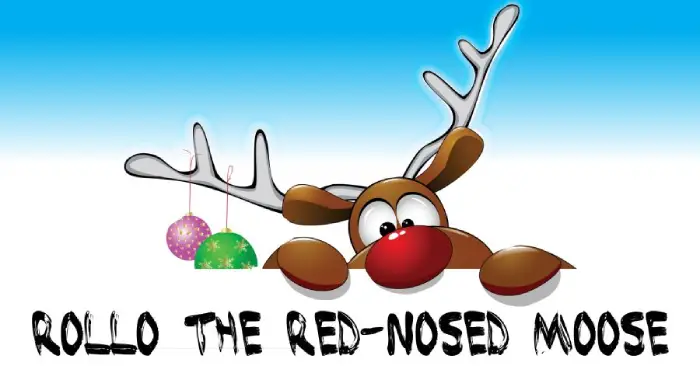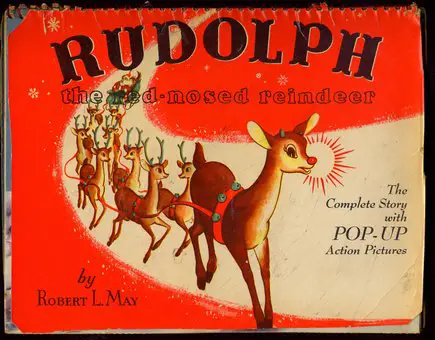
No, the name of this blog post is not inspired by John Travolta attempting to say ‘Rudolph the Red-Nosed Reindeer’… The Rudolph we know and love was almost cast as a completely different animal, with a different name! Read on to learn the history behind the beloved children’s poem, song and classic Christmas movie:
Robert L. May is far from a household name. I would venture to say if you recognize the name you are either a “Rudolph the Red Nosed Reindeer” historian or a contestant on Jeopardy. For those that are neither, May is the creator of the famed Christmas icon. But the original incarnation of the crimson-snouted hero has little in common with today’s version.
In 1939 the department store chain Montgomery Ward commissioned writer Robert L. May to scribe a book that they could give away to children. In years past they had bought and given away coloring books as a way to make them stand above other retailers. Distributing original content was much more cost efficient for Montgomery Ward. May’s initial idea was a moose, but decided that it would make more sense to stick with the traditional reindeer. After several name changes like Rollo and Reginald, May settled on Rudolph. The story he wrote was told in the form of a poem and was written in the same meter as “A Visit from St. Nicholas” also known as “Twas the Night Before Christmas.”
“A Visit from St. Nicholas” gave us the first version of Santa’s magical reindeer. The addition of Rudolph now seems brilliant, but at the time it was simply a way to attract shoppers. After the first Christmas distribution of “Rudolph the Red Nosed Reindeer,” a whopping 2.5 million copies had been distributed and Rudolph would go on saving Christmas for years to come.

Five years later Max Fleischer of the Jam Handy corporation saw the commercial appeal of Rudolph and created an animated cartoon telling the story of the outcast. It would be another half decade before Fleischer’s production would really be appreciated. He would need the help of a family member of Robert L. May.
Robert L. May’s brother in-law Johnny Marks took the original poem and turned it into the famous song we sing every year. Marks’ catchy tune along with the singing pipes of Gene Autry were added to the cartoon in the Christmas of 1949. Autry’s popularity combined with the Christmas spirit scored a record breaking 25 million album sales. Autry wasn’t the only one singing the infamous carol. Bing Crosby, Dean Martin, and even Alvin and the Chipmunks would also cover the holiday song.
With Rudolph firmly planted in the cultural zeitgeist of the time, Rankin/Bass adapted the tale into a stop-motion Christmas juggernaut. In 1964 NBC aired for the first time The General Electric Fantasy Hour featuring “Rudolph the Red-Nosed Reindeer.” The special was a hit and would air for the next seven years on NBC.
The Christmas special strayed far from the original poem and song, but audiences pined for Rudolph; the savior of Christmas. In 1971 CBS bought the rights to the program and has aired it every year since. “Rudolph the Red-Nosed Reindeer” is the longest running Christmas special in the history of TV. What was once simply a ploy to attract consumers has transformed into a worldwide phenomenon. The artful stop-motion and simplistic song combine to tell a worthy story of purpose and acceptance."
